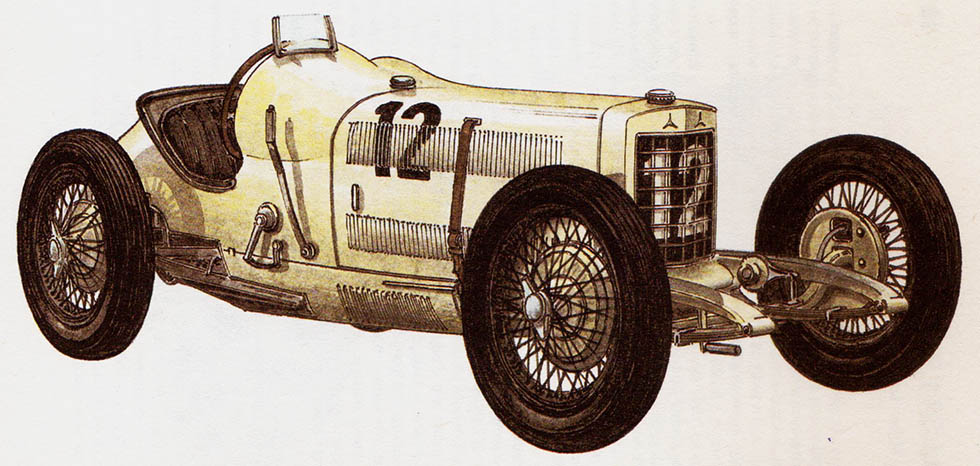MERCEDES – year 1926
Daimler Motor Company, Stuttgart, Germany.
The Daimler company in Stuttgart also had extensive experience with engine supercharging. Original, Witting system rotary wing compressor, with which there were constant problems with lubrication, it was replaced by the Roots rotary compressor. So equipped six-cylinder engine with a capacity 7250 cm3 became a power unit of the type Mercedes 28/95 PS, who won the Coppa Florio's race 1921 year. It was the first victory for a supercharged car in Europe.

Daimler Motor Company, Stuttgart, Germany.
In year 1923 Ferdinand Porsche took over the management of Daimler's technical department, previously operating in the Austrian company Austro-Daimler. At that time, the company used four-cylinder racing cars, Paul Daimler's two-liter engines, which had at 4500 rpm power 88,3 kW (120 KM). Cars with these engines achieved speed 185 km/h.
For the Italian Grand Prix race in Monza at the end of the year 1924 Porsche has prepared a completely new engine, eight-cylinder. With cylinder diameter 61,7 mm and the piston stroke 82,8 mm it had a capacity 1980 cm3. Two camshafts in the cylinder head steered 32 valves. The supercharged engine had power 117,8 kW (160 KM) by 7000 RPM. The car reached its maximum speed 210 km/h, but the chassis was very outdated compared to the engine quality.
At first, cars with four-cylinder engines were more successful in racing. Modern lightweight design, The eight-cylinder engine by Ferdinand Porsche won for the first time in 1926 of the year thanks to the technically excellent competitor Rudolf Caracciola. The “wet surface specialist” won his first Grand Prix in the rain on the track outside Berlin. In doing so, it reached an average speed 135,1 km/h. It was also the first Grand Prix for Germany.